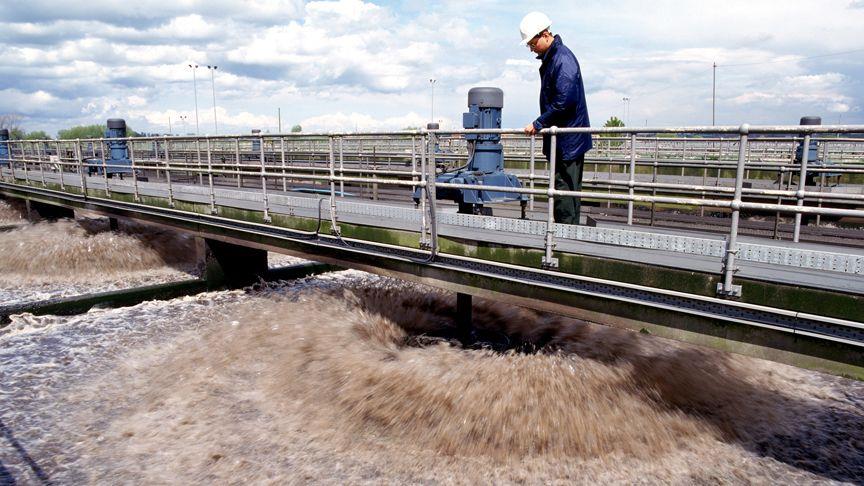“Water reuse has been increasingly recognized as an essential component in effective water resource management plans,” says the “Long Island Water Reuse Road Map & Action Plan” unveiled last week. “The United Nations formally acknowledged the importance of water reuse in 2017,” it adds.
“The benefits of water reuse have long been recognized and embraced in other parts of the world,” it continues. And now in the United States, “approximately 2.6 billion gallons of water is reused daily.”
But in New York State, “large-scale water reuse projects have been limited. There are a few projects in upstate New York and one on Long Island,” the “Riverhead reuse project” which started in 2016 “to redirect highly treated wastewater, as much as 260,000 gallons per day” from the Riverhead Sewage Treatment Plant to “irrigate the nearby Indian Island County Golf Course” instead of, as had been the practice, dumping it into Flanders Bay.
“Reusing water, for some other valuable purpose, provides numerous benefits,” the “Long Island Water Reuse Road Map & Action Plan” goes on. “These include protecting public wells and water supplies from salt water intrusion.” It calls for highly treated wastewater to be used for a variety of purposes here with additional irrigation of golf courses but also of sod farms and greenhouses, lawns and fields at educational and commercial sites and—highly important—to deal with “over-pumping.”
Indeed, a lesson for all of Long Island is how Brooklyn—on Long Island’s western end—lost its potable water supply more than a century ago: by over-pumping and consequent saltwater intrusion, along with pollution, notes John Turner, senior conservation policy advocate at the Seatuck Environmental Association.
So, Brooklyn began getting its water from reservoirs built upstate. There has been talk in recent years of Nassau County buying water from those New York City-owned reservoirs. But they are near capacity, says Turner, so the city “has not been welcoming Nassau County with open arms.”
For Nassau and Suffolk Counties water reuse is critical.
The “Long Island Water Reuse Road Map & Action Plan” was presented this week at an event at the treatment facility of the Great Neck Water Pollution Control District in Nassau County. Nassau is a case study of how the Brooklyn lesson has not been learned. In Nassau, which is 85% sewered, its sewage treatment plants dump wastewater through outfall pipes into nearby waterways and the Atlantic Ocean and Long Island Sound—and as a result Nassau’s water table is dropping.
 |
|
Walkway over aeration filters at a sewage treatment plant
File Photo
|
The “Long Island Water Reuse Road Map & Action Plan” charting a course for Long Island to reuse water from its underground water supply, its “sole source” of potable water, was created by Islip-based Seatuck working with the Greentree Foundation and Cameron Engineering & Associates, and a Water Reuse Technical Working Group of 28 members.
Suffolk County is about 25% sewered. Some water treatment plants in Suffolk recharge treated wastewater into the ground but plants also do what Nassau has been doing, sending wastewater out to adjacent waters or the ocean or Long Island Sound through outfall pipes.
There has been action through the years on pollutants in the water supply, on quality of drinking water, in Nassau and Suffolk. There must be a parallel emphasis on quantity.
“Major Action Plan Recommendations” in the new plan, include: “Develop Water Reuse Regulations/Guidelines…Convene a Long Island Water Reuse Workgroup to develop and implement strategies…Conduct engineering studies on the most feasible projects…Engage Long Island Golf Course Association in plan development…”
The “Water Reuse Technical Working Group” for the plan included: Anthony Caniano, hydrologist at the Suffolk County Department of Health Services; Dr. Christopher Gobler of the Stony Brook University School of Marine & Atmospheric Sciences; Bill Zalakar, president of the Long Island Farm Bureau; Chris Class, marine scientist at The Nature Conservancy; Joseph Gardner, president of the Long Island Golf Course Superintendent’s Association; Riverhead Town Sewer District Superintendent Michael Reicher; Jeremy Campbell, director of the South Shore Estuary Program; Joyce Novak, executive director Peconic Estuary Program; Sara Cernadas-Martin, water quality program manager for the Peconic Estuary Program; Christopher Schubert, program development specialist at the New York Water Science Center; Adrienne Esposito, executive director of Citizens Campaign for the Environment; Suffolk County Public Works Supervisor Madhav Sathe and Deputy Suffolk County Executive Peter Scully.
Projects for water reuse considered in the Town of Brookhaven in the plan include at: L. Delea and Sons Sod Farm in Miller Place; Miller Place High School; Pantaleons Farms in Stony Brook; and Longwood Farms in Middle Island.
For more information on the plan visit https://seatuck.org/water-reuse/
